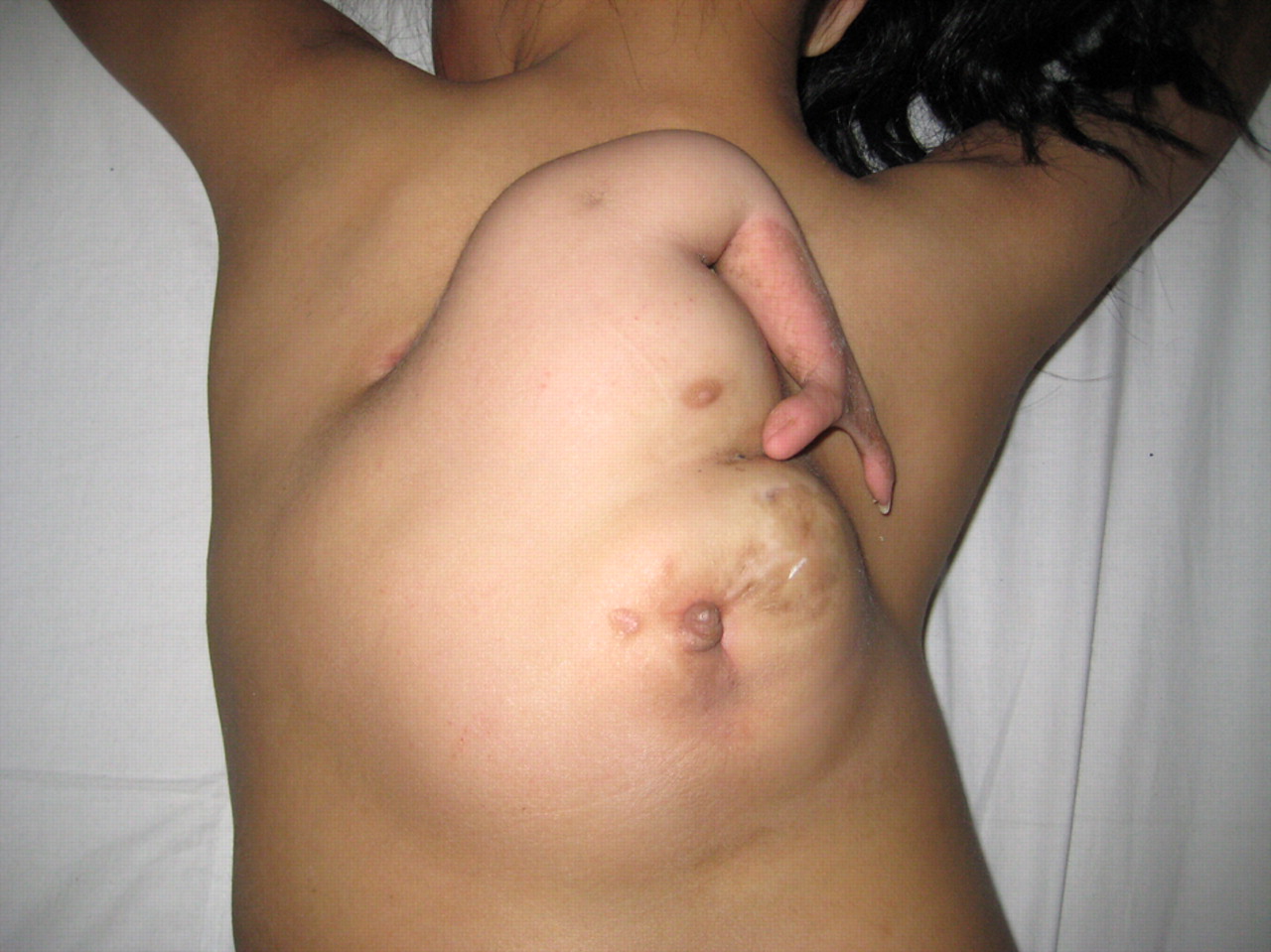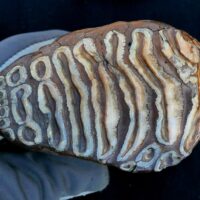Fetus in fetu (FIF) is a rare congenital anomaly characterized by the presence of a parasitic monozygotic twin encased within the body of its host twin. Because FIF is asymptomatic throughout pregnancy, it is mainly diagnosed in children with an abdominal mass after birth. In the case reported here, at 38–39 weeks of gestation, a 33-year-old woman (gravida 4, para 3) was referred for routine obstetric ultrasonography. Fluid accumulation was identified along with calcification resembling two well-developed legs and a trunk with undifferentiated organs inside. Slight spontaneous movement of the legs was observed. The fetus was delivered based on the presumed diagnosis of FIF. Postnatal sonography and computed tomography (CT) supported the diagnosis. The neonate underwent surgical excision of the tumor and was discharged on the eighth postoperative day. Ultrasound can be used to provide accurate prenatal diagnosis of FIF, and early detection is crucial for better outcomes.
“Fetus in fetu” (FIF) was first described by Meckel around 1800 and is defined as an abnormal monozygotic twin, also referred to as a “parasitic twin,” developing inside the body of its host twin. The condition is extremely rare, with an incidence of approximately 1 in 500,000 live births, most commonly found in infants. In most cases, the parasitic twin is anencephalic and acardiac, with the most frequent locations being the retroperitoneum (80%), skull (8%), and sacrococcygeal region (8%). Despite extensive research, the exact nature of this anomaly remains a subject of debate.
There exists an ongoing controversy as to whether FIF is a separate entity or a highly differentiated teratoma. The presence of vertebral bodies and limbs can be used to differentiate FIF from a teratoma. The presence of vertebral bodies indicates that the mass has passed the primary stage of gastrulation and originates from the primitive streak. A teratoma, in contrast, consists of pluripotent cells without organogenesis or vertebral segmentation. This ongoing debate regarding the etiology of FIF is of great interest, as teratomas have malignant potential, whereas FIF is generally considered a benign condition, with only one reported case of malignant recurrence after FIF resection.
How is Fetus-in-Fetu Detected?
FIF can be detected through prenatal ultrasound, which typically reveals a complex mass with well-defined borders inside the baby’s abdomen. The mass often contains a fluid-filled sac with solid elements, bony structures, and sometimes calcifications. Important causes of newborn abdominal calcification include adrenal neuroblastoma, adrenal hemorrhage, meconium peritonitis, teratoma, FIF, and viral infections.
Imaging plays a crucial role in diagnosing FIF. Multiple case reports describe FIF diagnosis based on CT identification of a vertebral column; however, reports detailing ultrasound and MRI findings remain sparse. Knox et al. reported a case of FIF where no calcification was visible within the mass on a plain radiograph. Therefore, the absence of a visible vertebral column in imaging should not be used as a criterion to rule out FIF. Plain abdominal radiographs can reveal vertebrae or specific bony structures within an amorphous soft tissue mass. CT scans not only confirm radiographic findings but also provide additional information about FIF’s relationship with surrounding structures.
What Happens After Birth?
Once the child has been delivered, more tests are done to confirm the diagnosis before feeding begins. Depending on the advice of the pediatrician, this could include abdominal ultrasound, X-ray, CT scan, MRI, or other studies.
As soon as the baby is stable, a surgeon removes the mass, which then goes for pathologic evaluation. While FIF doesn’t cause serious health problems, ongoing post-surgical monitoring is sincerely warranted. Follow-ups can involve ultrasound, MRI, or CT scan along with blood tests for alpha-fetoprotein (AFP) and human chorionic gonadotropin (hCG) for 2 years to look for malignant recurrence. The majority of previous reports point to babies having normal outcomes after removal of the parasitic twin by the surgery.
Theories Behind Fetus-in-Fetu
There are two primary hypotheses regarding the origin of FIF.
One suggests that the mass begins as a normal fetus but becomes enveloped inside its twin during early development. The other hypothesis proposes that FIF is a highly differentiated form of teratoma. While FIF is generally benign, the distinction between these two conditions remains significant due to teratoma’s potential malignancy.
Will It Happen Again?
The risk of having a second baby with FIF is extremely low.



















